Homemade Artisan Sourdough Bread
5.0
(11)
Your folders
Your folders
Prep Time: 1500 minutes
Cook Time: 45 minutes
Total: 1545 minutes
Servings: 16
Cost: $1.01 /serving
Author : Bill
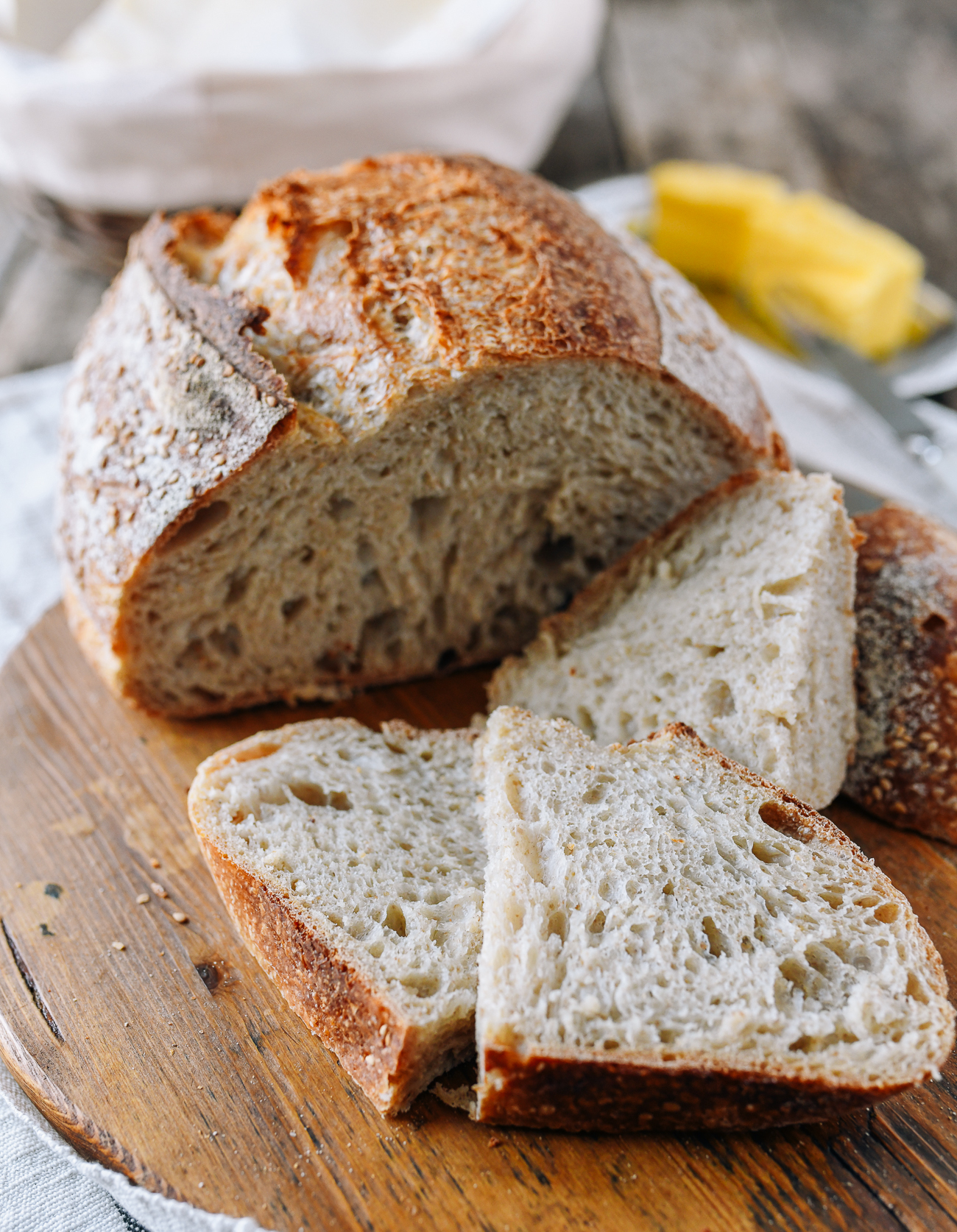
Ingredients
Export 4 ingredients for grocery delivery
Instructions
Step 1
The first step is to ferment your starter to bring it up to full strength. Take the starter out of the refrigerator, and stir in 60g lukewarm water and 60g of bread flour or whole wheat flour until well-combined. (For reference, I usually keep about 70g of starter as a baseline.)
Step 2
Cover it back up, and let it sit at room temperature for 4 hours, or until it doubles in size and just starts to fall again. This means it is at maximum strength.
Step 3
If you see a grey or light brown liquid floating on top of your starter when you take it out of the fridge, this is called “hooch.” This is the alcohol the yeast produces when it has run out of food (i.e. flour). If you bake bread regularly (and feed your starter regularly), hooch will not form. Just pour it off, or stir it back in for a more sharp-tasting (i.e. sour) sourdough. It’s a personal choice, but I recommend you pour it off before feeding, since the hooch can make your bread taste bitter.
Step 4
After your sourdough has been fed and has begun to ferment, measure out the flour. The easiest, most accurate way to do this is to place a mixing bowl on a digital scale, zero it out, then add 375g of bread flour, zero it out again, and then add 125 g whole wheat flour (500 g total).
Step 5
Use a stiff rubber spatula to mix the flours until combined. Add 375g of water, again using the scale if you can. Mix the flour and water until all the flour is moistened, and you have a scraggly dough. No need to overwork it at this point. Cover the bowl with your clean plastic bag, and let the dough rest for at least 90 minutes, or until your sourdough starter is ready (i.e. up to 4 hours).
Step 6
Once the sourdough starter has bloomed to its optimal state, pour 120g of it into the bowl with the rested dough. (Cover and stash the starter back in the refrigerator for future loaves.) Using a stiff rubber spatula, fold and mix the dough and starter for 2-3 minutes until combined. The dough will be very sticky. Cover the dough with your clean plastic bag, and let it rest again for 30 minutes.
Step 7
Sprinkle half the salt evenly on top of the dough. Wet your fingers, and use one hand to grab a piece near the edge of the dough, steadying the bowl with the other hand. Lift the dough vertically, stretching and folding the dough over to the other side. Sprinkle the other half of the salt over the dough and stretch and fold the dough again.
Step 8
Continue to repeat this lift, stretch, and fold motion 4-5 times, rotating the bowl each time. As you incorporate the salt, the gluten will tighten up, and it will not stretch as much.
Step 9
At this point, lift the dough ball off the bowl, drop it, fold it over, and press in a motion similar to kneading. Continue for 2-3 minutes, or until you feel the salt is incorporated into the dough.
Step 10
Cover with the clean plastic bag, and rest for 1 hour. This starts the first rise, or bulk fermentation stage. Your dough will do its best at 75°F/23°C, so if your house is cool, you can put the dough in the oven with a bowl of just boiled water to keep it warm and moist.
Step 11
Remove the plastic, wet your fingers, and repeat the lift, stretch and fold motion 6 to 7 times until the gluten tightens up and the dough is no longer easy to stretch. This time, make sure the fold allows the dough to fall gently upon itself. Do not press and degas (punch air out of) the dough. Cover the dough with plastic and rest for 45 minutes.
Step 12
Repeat this stretch, fold, and rest process 3 more times, for a total of 4 times over the course of the next couple of hours. Each time, your dough will proof, ferment, and grow in size. It will get lighter/puffier, and become less sticky. By the 4th time, you should start to see bubbles forming. You’ll also know good amounts of gluten have formed when the dough stretches nicely without tearing.
Step 13
After the last lift, stretch and fold, cover the dough again to rest for 1 hour. The dough should end up about 1.5X to 2X its original size, and should have a puffy, light feel. If you are unsure, you can do another stretch, lift and fold, and continue to let it proof for another hour to be safe.
Step 14
Once you have determined your dough is ready for the next step, lightly flour your counter or work surface, and pour the dough out of the bowl. Just let gravity do its work, letting the dough fall slowly onto the counter. Don’t rush it, and take care not to deflate air bubbles that have formed in the dough.
Step 15
Dust your hands with flour. With both hands, gently grab the side of the dough opposite you and pull it away from you slightly. Then fold it towards you onto itself, to the center of the dough. If the dough sticks to the counter, gently loosen it with a floured dough scraper.
Step 16
Next, grab the right side of the dough. Stretch it slightly to the right and fold it to the middle. The dough should be wet enough to stick to itself. Do the same with the left side, stretching it slightly to the left and folding it to the middle.
Step 17
Finally, use both hands to grab the bottom of the dough closest to you. Roll and fold it away from you, pulling it slightly towards you as you do (there should be some tension on the dough). After you’ve completed rolling, you can further shape your dough by gently sliding your dough scraper underneath the dough. This creates tension on the surface, allowing you to shape it into an oval shape or round boule.
Step 18
Sprinkle any seeds on top, or if not using seeds, lightly flour the top of the dough. Sprinkle all-purpose flour (about 2 teaspoons) into your proofing basket, preferably one with a cloth liner. With your left hand lightly supporting the top of the loaf, carefully slide a dough scraper under the right side of the dough. Push it into your left hand, lifting up the dough, and gently place it into the floured proofing basket upside down (the side with the seeds should be facing down).
Step 19
Cover the dough in the proofing basket with your plastic bag. Proof for 90 minutes at room temperature (or ideally 75°F/23°C) until it passes the finger poke test. Press the dough with a floured finger. If it springs back completely, it needs more proofing time at room temperature. If it springs back a little but still leaves an impression, it’s ready for the refrigerator.
Step 20
Place the dough in the refrigerator overnight or longer to cold ferment (still covered with a plastic bag). Cold ferment your dough for at least 8 hours. No more than 12 hours has given us the best results. Once you have mastered this recipe, you can try longer ferments to develop more "sour" flavor in your dough.
Step 21
Arrange a rack in the middle of your oven, with an empty Dutch oven positioned in the center (with the lid on). Preheat to 450°F/232°C.
Step 22
Every oven is different, but it should take at least 30 minutes to preheat both the oven and heavy cast iron Dutch oven inside. Even if your oven says it’s preheated, allow 20-30 minutes for the Dutch oven to heat completely.
Step 23
Cut a square piece of parchment paper large enough for the loaf, and for you to lift the loaf up by grabbing both sides of the parchment. Fold creases on all four sides of the parchment paper so it doesn’t curl. Set aside.
Step 24
Prepare a square piece of heavy-duty aluminum foil, wrinkling it slightly and folding it in half to create some air pockets between the two layers. You will place the foil in the bottom of the Dutch oven, and then place the loaf on top, so the bottom of the loaf does not scorch or bake into too hard of a crust.
Step 25
Once the oven AND Dutch oven are fully preheated, take your loaf out of the refrigerator. I’ve found you get the best oven spring (i.e., rise while baking) when you place cold dough into a hot Dutch oven, so don’t take it out earlier.
Step 26
Gently turn the chilled loaf over onto the center of the parchment paper (the side with the seeds, if you used them, should be facing up). Slowly lift the proofing basket/banneton straight up, until the cloth lining releases from the loaf and it is completely out of the basket.
Step 27
Using a razor blade, make four shallow slits across the lower portion of the four sides of the loaf. This will release some surface tension, allowing it to spring better in the oven. Next, make a single deep slit along the top of the loaf. It should be about ½ inch (~1 cm) deep and go from end-to-end (stopping 1 inch/2.5cm before the edge on both ends).
Step 28
Use oven mitts to remove the preheated Dutch oven to your stovetop, and remove the cover. Place the wrinkled foil on the bottom of the pot.
Step 29
Lift your loaf by both ends of the parchment paper, and lower it carefully into the hot Dutch oven. The parchment paper will protrude out, which is ok. Check the cut you made on top of the loaf. If it has stuck together and closed up, carefully run the razor through it again, taking care not to burn yourself on the hot pot!
Step 30
Cover the Dutch oven, and return it to the oven. Bake your bread, covered, for 35 minutes.
Step 31
After 35 minutes, remove the cover from your Dutch oven (set it on the stovetop since it is super-hot!), and bake for an additional 10 minutes. You can turn off the heat at this point and use the residual oven heat, or just leave the oven on 450°F/232°C the whole time. If you like a darker/harder crust, leave it in the oven for an additional 5 minutes.
Step 32
Use oven mitts to transfer the Dutch oven to your stovetop. Lift the loaf out by the parchment paper, and transfer to a cooling rack. Cool until warm (not hot!) to the touch—at least 20-30 minutes—and enjoy!
Top similar recipes
Curated for youYour folders
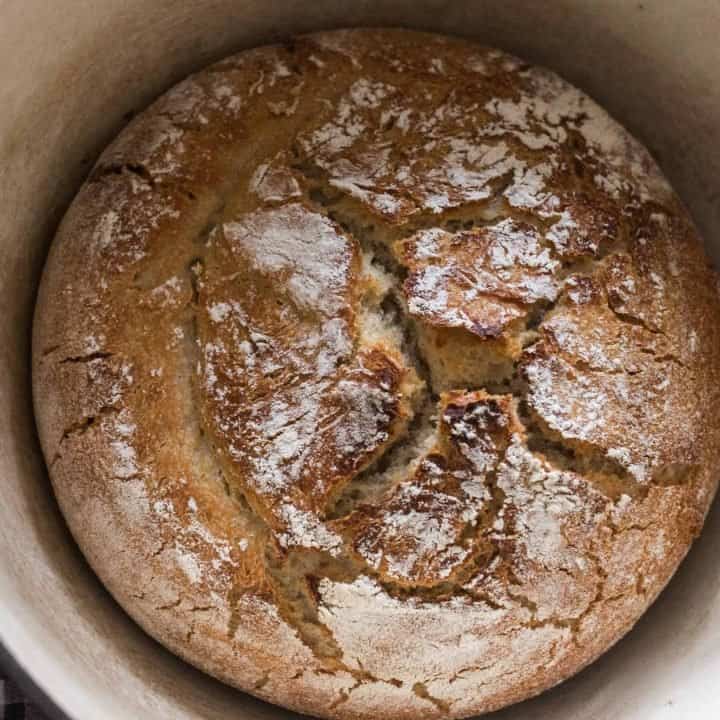
 419 views
419 viewsArtisan Sourdough Bread
farmhouseonboone.com
4.5
(17)
40 minutes
Your folders
 103 views
103 viewsArtisan Sourdough Bread
fleischmannsyeast.com
Your folders
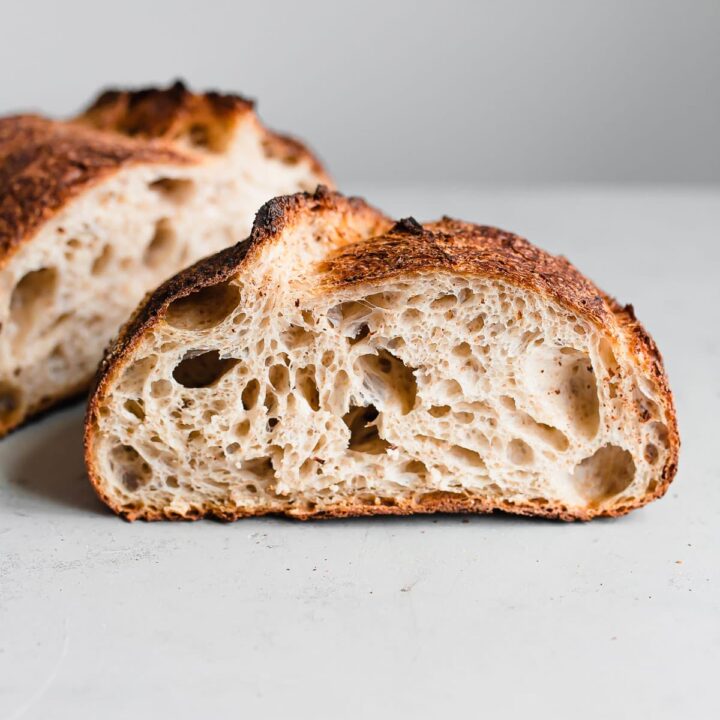
 829 views
829 viewsArtisan Sourdough Bread Recipe
abeautifulplate.com
4.8
(119)
50 minutes
Your folders

 503 views
503 viewsArtisan Sourdough Rye Bread
breadtopia.com
Your folders

 125 views
125 viewsPumpkin Sourdough Artisan Bread
amybakesbread.com
4.6
(9)
40 minutes
Your folders
 108 views
108 viewsPumpkin Sourdough Artisan Bread
amybakesbread.com
Your folders
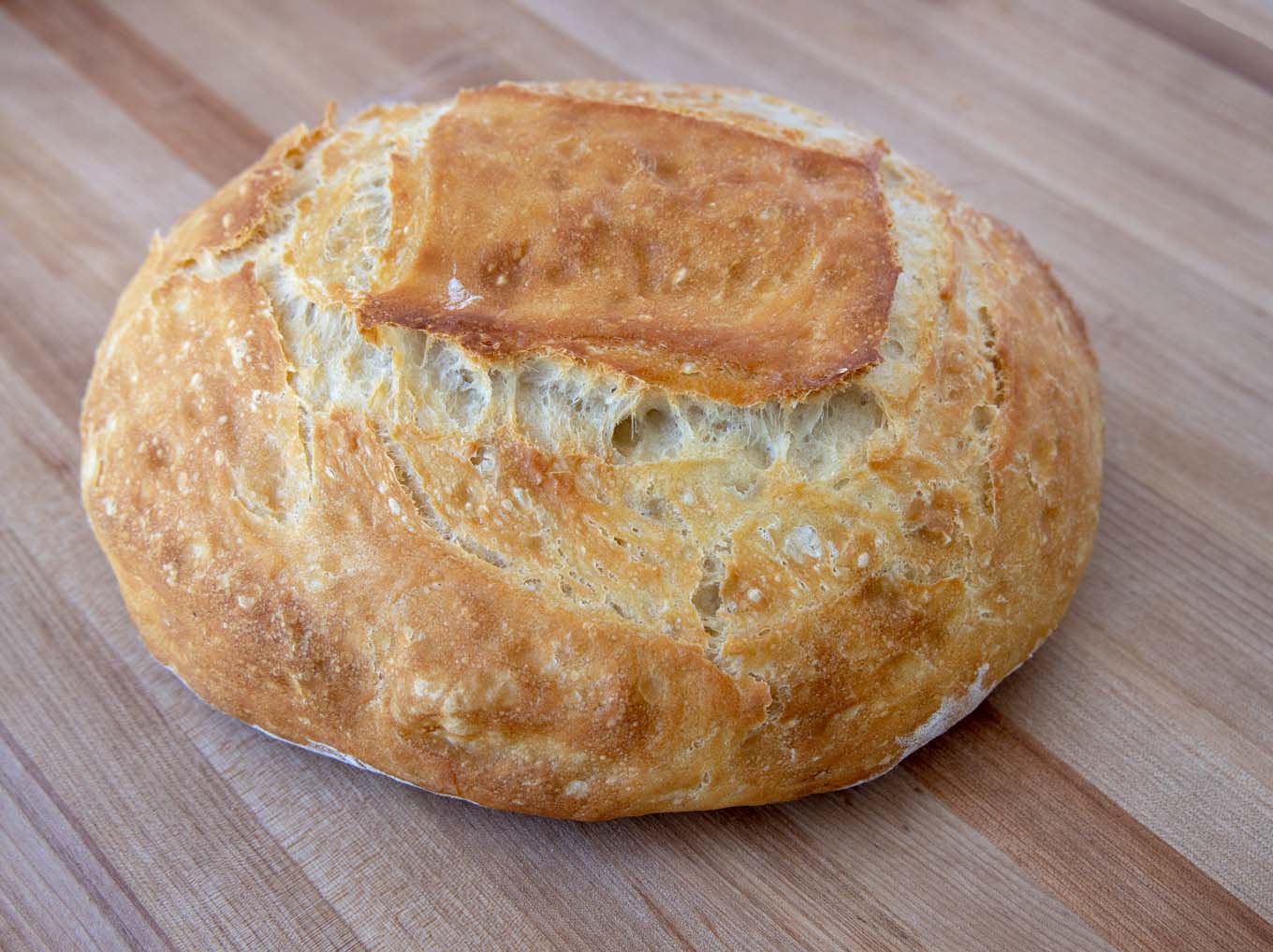
 498 views
498 viewsHomemade Artisan Bread
askchefdennis.com
5.0
(28)
40 minutes
Your folders
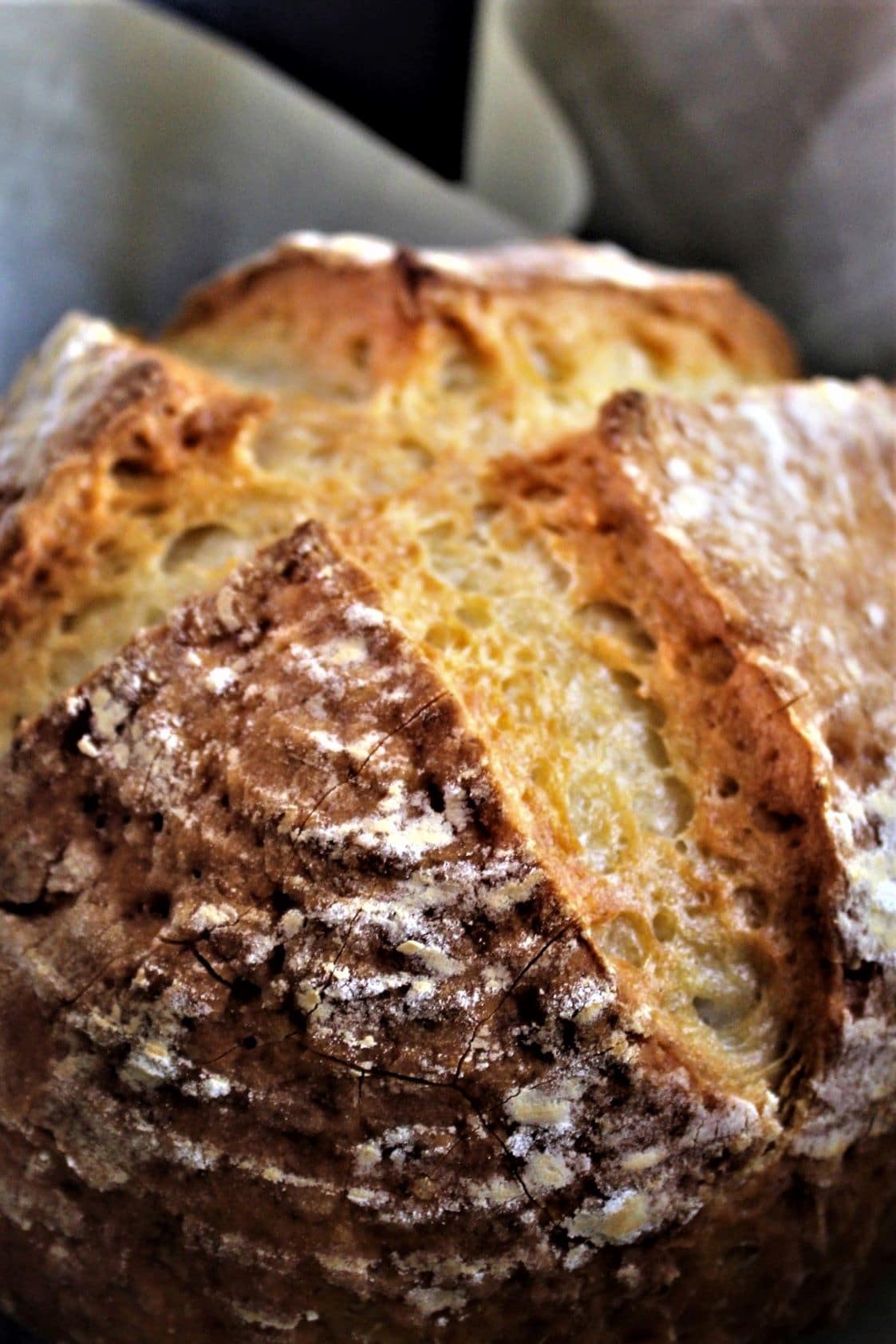
 1073 views
1073 viewsGluten Free Artisan Sourdough Bread
letthemeatgfcake.com
4.7
(12)
60 minutes
Your folders

 899 views
899 viewsEasy Sourdough Artisan Bread Recipe
anoregoncottage.com
4.7
(343)
30 minutes
Your folders

 281 views
281 viewsGluten-Free Artisan Sourdough bread
fromthelarder.co.uk
5.0
(2)
70 minutes
Your folders

 403 views
403 viewsArtisan Sourdough No-Knead Bread
breadtopia.com
34 minutes
Your folders
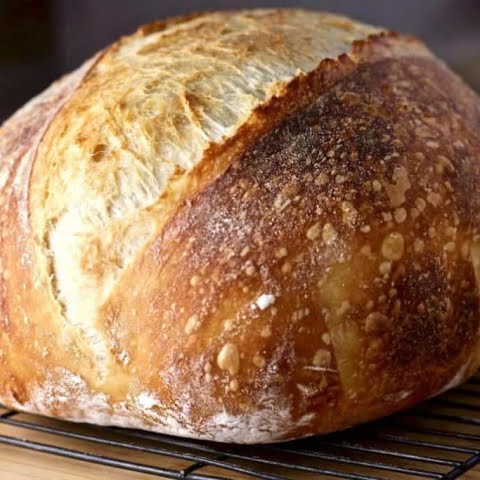
 502 views
502 viewsBeginners Artisan Sourdough Bread R...
homemadefoodjunkie.com
4.4
(273)
40 minutes
Your folders
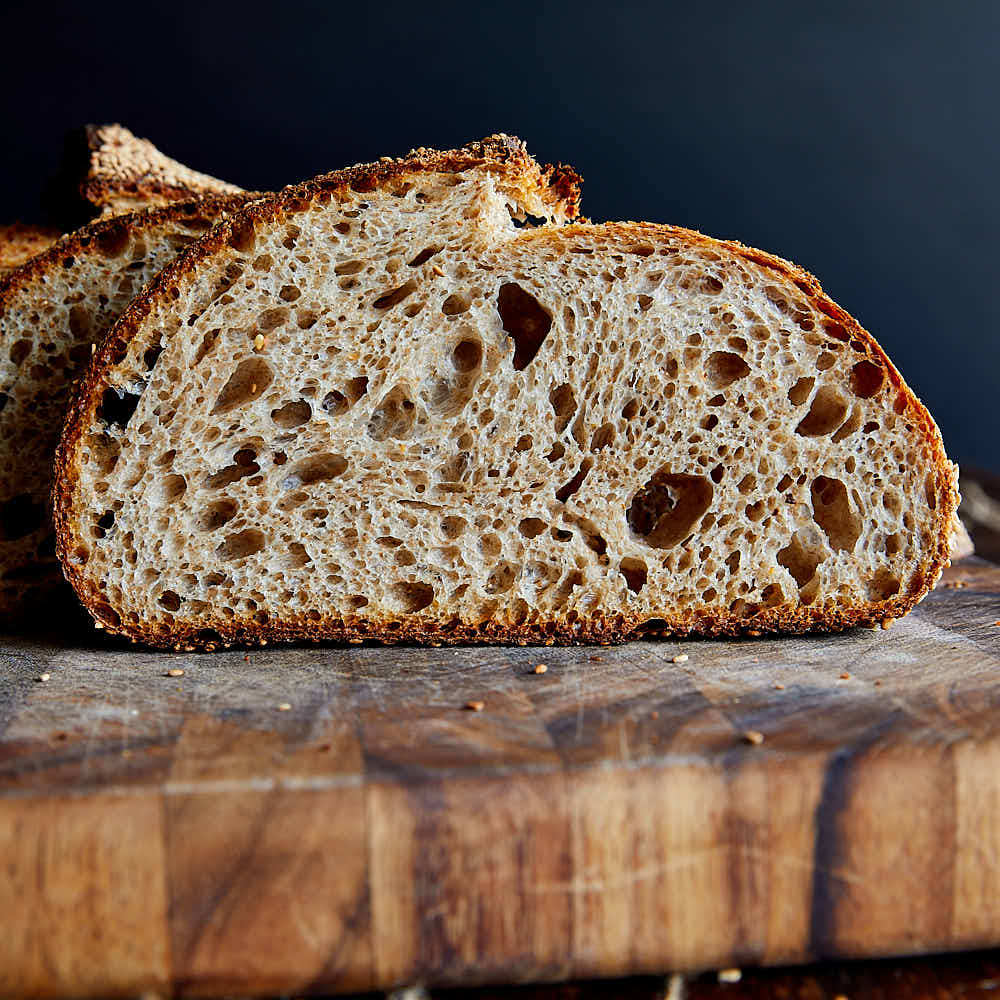
 310 views
310 viewsBasic Artisan Sourdough Bread Recip...
tasteofartisan.com
4.9
(15)
Your folders

 342 views
342 viewsArtisan Green Olive Sourdough Bread
aheadofthyme.com
5.0
(4)
50 minutes
Your folders

 115 views
115 viewsCranberry Pecan Artisan Sourdough B...
amybakesbread.com
4.9
(9)
45 minutes
Your folders
 85 views
85 viewsEasy Sourdough Artisan Bread Recipe
anoregoncottage.com
Your folders

 134 views
134 viewsWhole Wheat Sourdough Artisan Bread
amybakesbread.com
5.0
(1)
45 minutes
Your folders
 76 views
76 viewsWhole Wheat Sourdough Artisan Bread
amybakesbread.com
Your folders
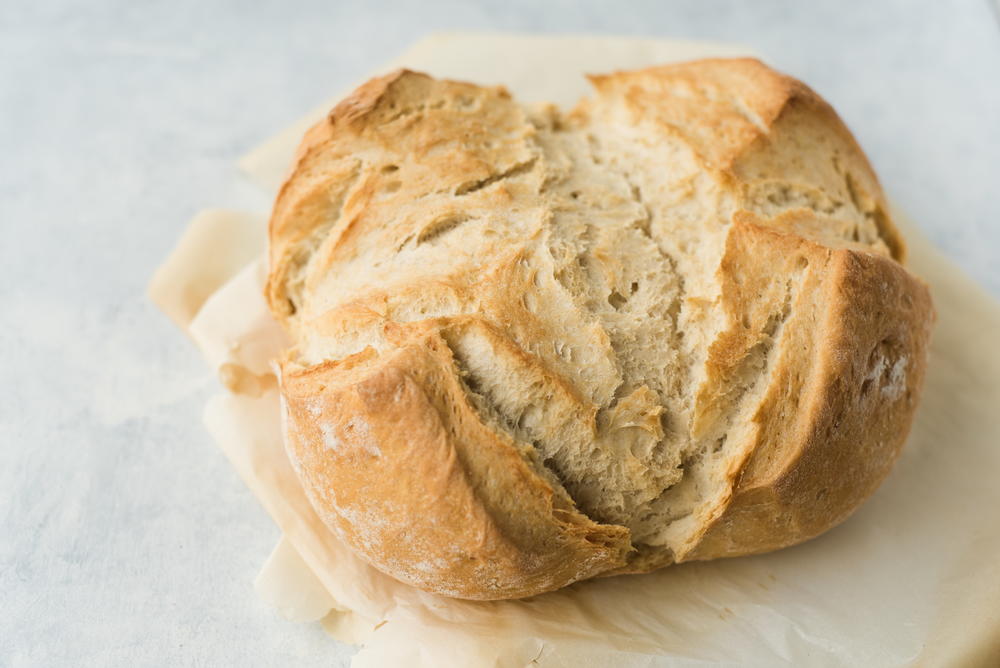
 263 views
263 viewsQuick Homemade Artisan Bread
recipelion.com
3.0
(10)